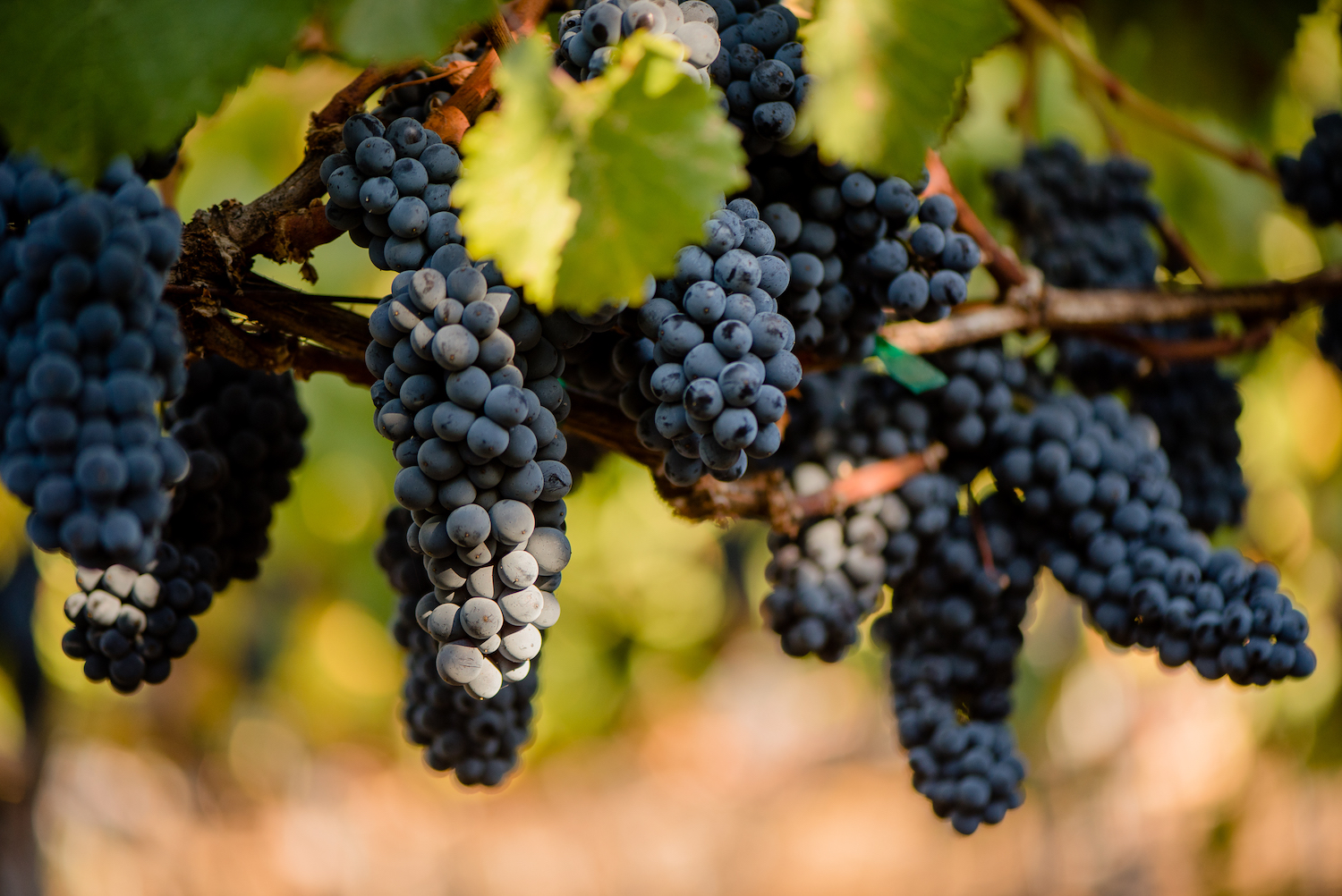
26 Aug Comparing Pinots
Comparing Pinots: Part 1
The similarities and differences in geology and geography between Humboldt County and Russian River Valley Pinot Noir made by Joseph Jewell Wines.
Acreage
Before we begin our deep dive comparison between Humboldt County and Russian River Valley Pinot Noir, it is important to have an understanding of the size of areas we’re discussing. Humboldt County is roughly 200 miles north of San Francisco with Del Norte County at its northern border, Mendocino County on its southern border,Trinity County to its east and ~150 miles of fog-shrouded Pacific coastline. Humboldt is ~2.5 million acres in total with a measly 150 acres of grape vines planted majority of which are in southern Humboldt County with one AVA (American Viticultural Area), Willow Creek, containing 30 acres in the northeastern part of the county.The Russian River Valley sites in the middle of Sonoma County which is roughly 30 miles north of San Francisco is bordered by Marin County, Napa County, Lake County, Mendocino County and the Pacific Ocean. With 1.9 million acres in total, Sonoma County has roughly 90,000 acres of grape vines planted with the Russian River Valley containing ~15,000 of them.
We can see purely from acreage that the Russian River Valley is a much more established wine growing region than Humboldt.
Soils
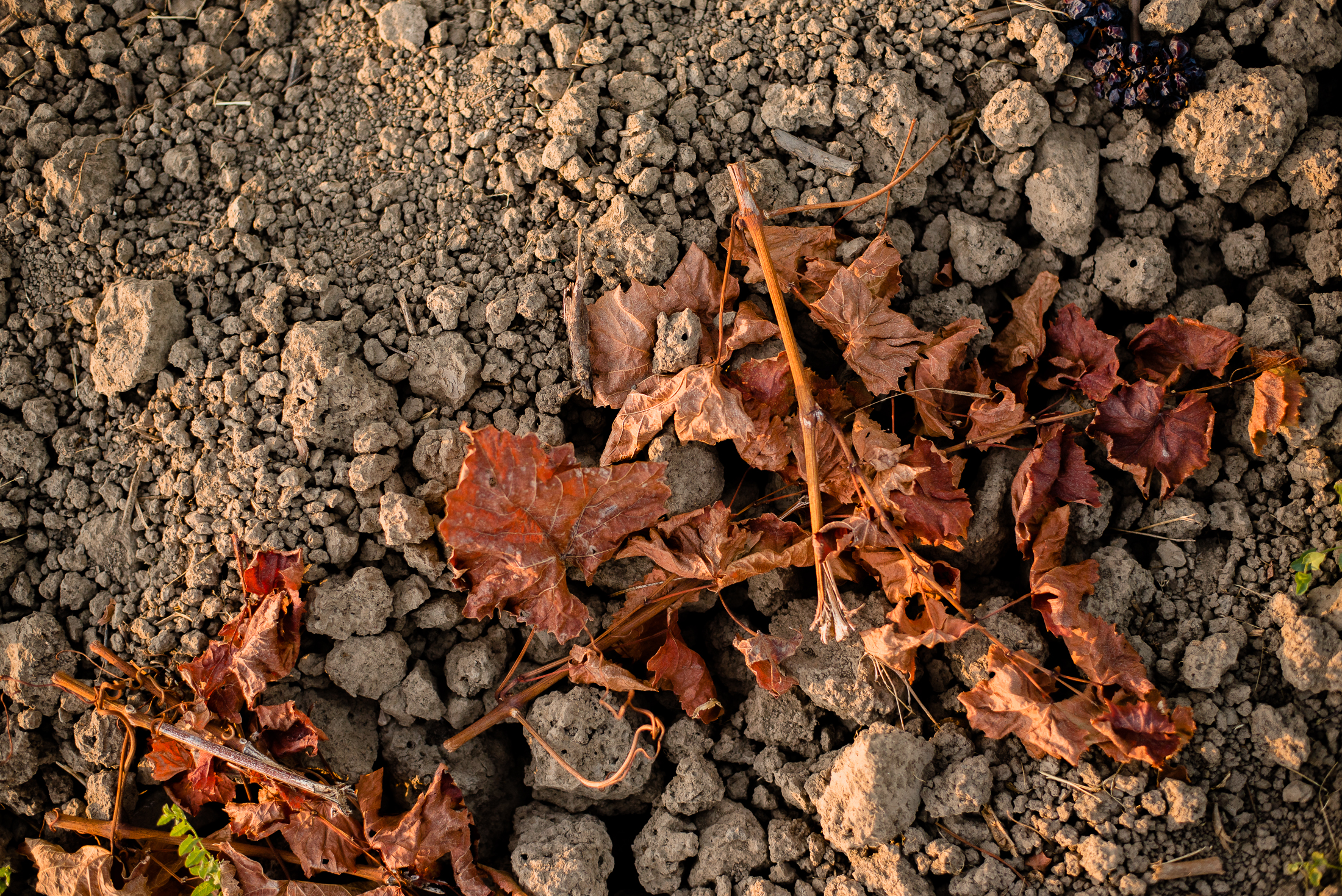
Goldridge soil, Starscape Vineyard, Russian River Valley
The Russian River Valley is famous in the Pinot Noir world for having a fairly consistent type of soil throughout the valley. Goldridge soil is a mix of sandy loam with small portions of clay and volcanic material mixed in. As the name suggests, it is gold in color, very well draining as sand is, and doesn’t hold too much heat as a darker colored soil would. There are a handful of areas in the Russian River Valley that have solid clay, dubbed Sebastopol Clay, layered below the Goldridge soil. One vineyard in particular that we work with that has this soil layering is Hallberg Vineyard. The clay is a soil that retains water very well, just think back to your elementary school pottery classes. Because of the clay’s ability to hold water, the Hallberg Vineyard is able to be completely dry farmed, meaning that the vineyard managers don’t have to irrigate the 160 acres as other vineyards do.
Unlike in the Russian River Valley where many of the great vineyards share fencelines, it is more common to say that Humboldt vineyards share ridgelines. With only 150 acres total in the county many of the vineyards are a 30 –

Volcanic soils, Alderpoint Vineyard, Humboldt County
60 minute drive from one another across ridgelines. Much of Humboldt is made up of north to south steep ridges. Compared to the Russian River Valley, which is a true valley with many flat parcels and rolling hills, the terrain ofHumboldt doesn’t leave much arable vineyard land for planting. As you can guess, this terrain makes for a diverse selection of soils that greatly differ from vineyard to vineyard. We find volcanic soils in the lower elevation Alderpoint Vineyard and colluvium derived from sandstone with earthflow deposits derived from schist in the Ryan Vineyard. While we find fractured stone and shale in the Fruitland Ridge VIneyard and Elk Prairie VIneyard on the higher elevation Fruitland Ridge.
Temperature
Grape vines are particular as to what range of temperature they can thrive in. There are two latitudinal bands on either side of the equator circumference the earth that are optimal for growing wine grapes. These latitudes range from 30 degrees to 50 degrees with Northern California sitting at the same latitude as Portugal, Spain, Southern Italy, Greece, and Lebanon. These geographies, along with the local topography, create differing conditions for growing our Pinot Noirs.
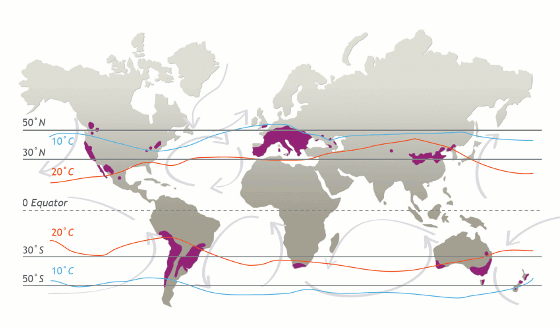
Both southern Humboldt County and the Russian River Valley are influenced by large rivers that flow from the Pacific Ocean. In Humboldt, the mighty Eel River flows south to north, quite rare, for 196 miles from Lake Pillsbury in Mendocino County out to the Pacific Ocean at the town of Ferndale on the Humboldt Coast. The Russian River begins in the Redwood Valley and Potter Valley flowing south to the Pacific Ocean at the headlands of the Sonoma Coast in the town of Jenner. While the rivers are very different in their direction of flow, both are famous for the fog, also known as “marine layer,” that persists throughout the growing season.
The fog along the west coast of the United States is important for a variety of reasons, but in our case the fog is very important for bringing moisture to the vineyards and protection from the harsh summer sun which provides a cooling effect for the vines. As Pinot Noir is such a delicate grape to grow, the fog helps winegrowers to ripen Pinot sugars slowly while maintaining acidity for a balanced grape.
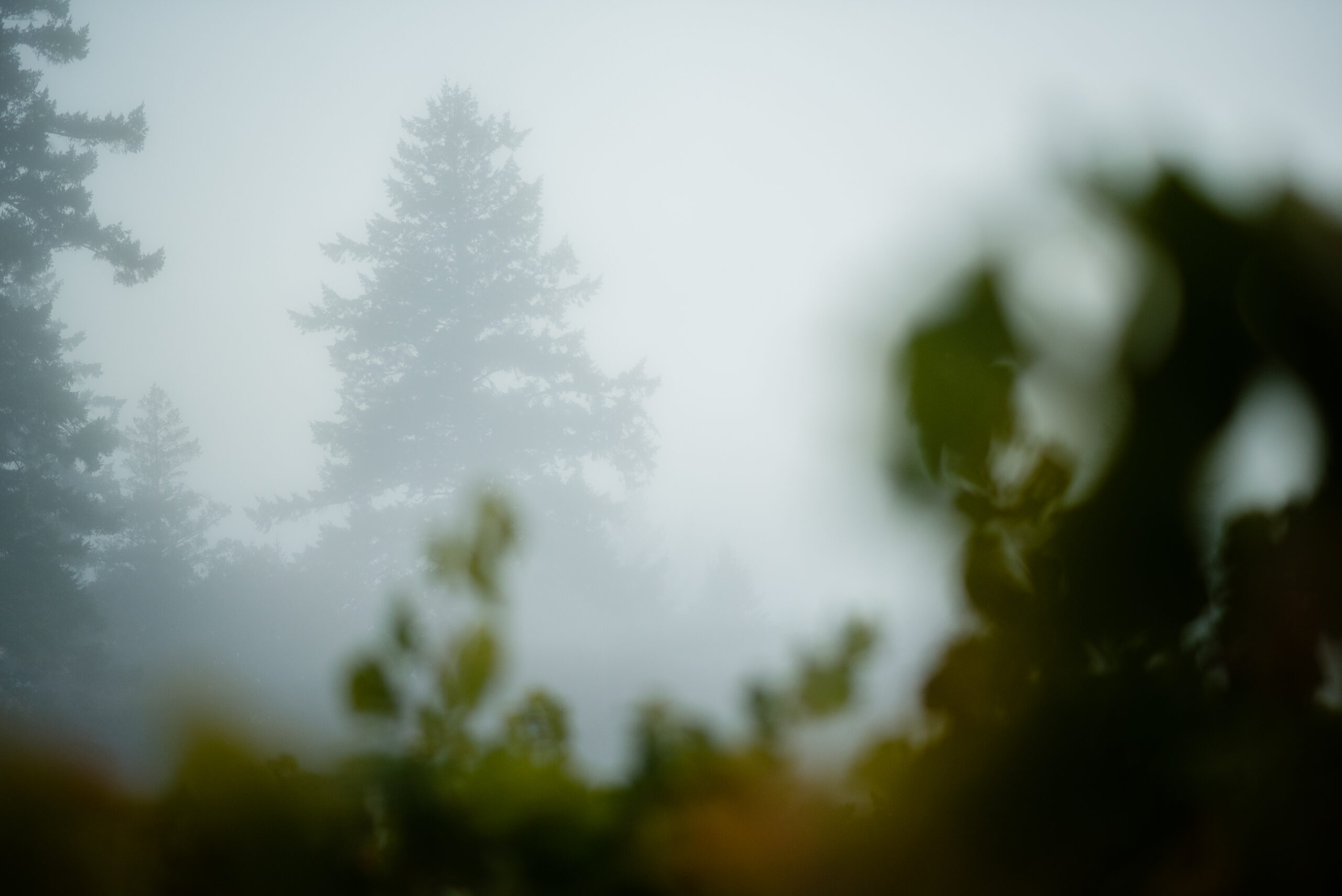
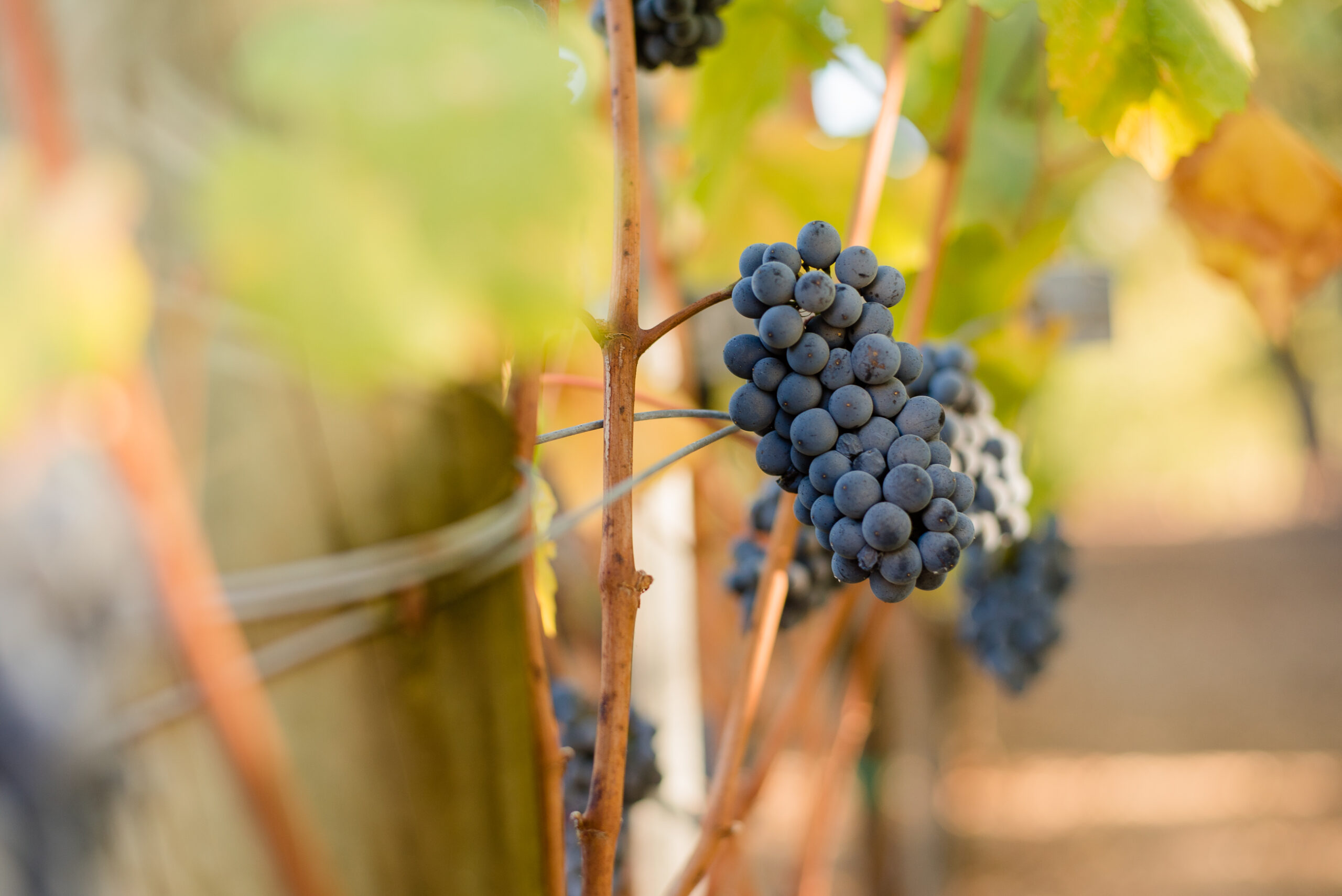
Alderpoint Vineyard, Wädenswil clone
Another factor that affects grape growing temperature is elevation. In Sonoma County there are AVA’s that require vineyards to be above the fog, or at a minimum elevation of 920 feet. Since southern Humboldt County doesn’t have any AVA’s there aren’t any requirements for a vineyard’s elevation. With this you find the Alderpoint Vineyard sitting at only 300 feet while Elk Prairie and Fruitland Ridge Vineyards sit at about 1,000 feet. This elevation change creates the latter vineyards to have greater UV light exposure throughout the growing season contrasted with higher & colder winds coming from the valley below while Alderpoint experiences more concentrated heat and humidity as the vineyard is below the fog and closer to the river.
A commonality that these two growing regions share are the numerous redwood trees towering above the vineyards. When discussing growing Pinot noir Adrian often notes that one can grow exceptional Pinot Noir in areas that redwood trees thrive. The Sonoma Coast, which the Russian River Valley sits in, was once heavily and unapologetically logged for its redwood trees. Southern Humboldt County is home to one of the last remaining virgin redwood tree groves in the United States called the Avenue of the Giants. Next time you see some redwoods, keep an eye out for Pinot vines.
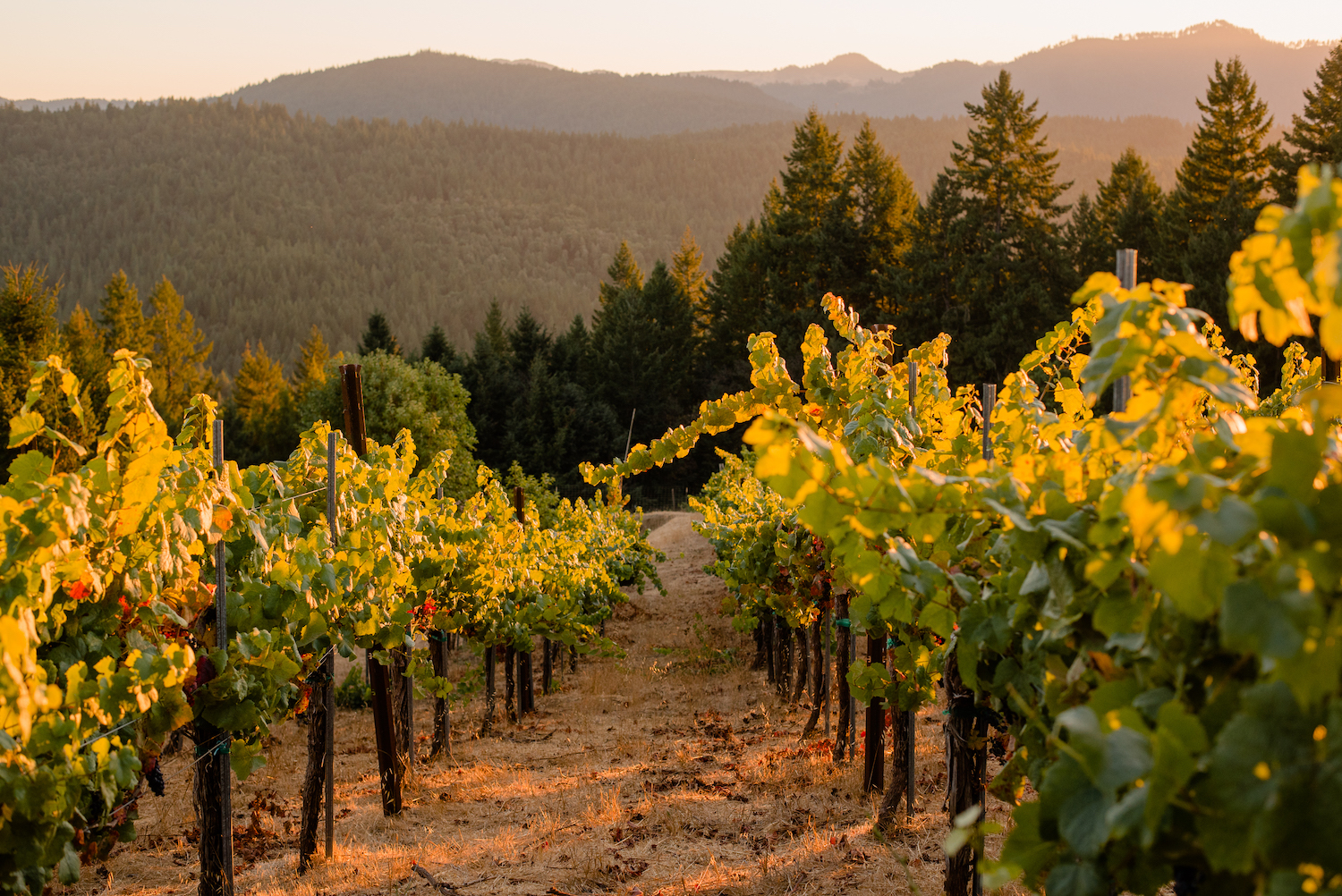
Clones
Something that many wine enthusiasts don’t know about Pinot noir is that it comes in many sizes, colors, flavors, and aromas. You can almost think of “Pinot noir” as the parent category for all of the clones that exist of the grape varietal. There isn’t just one type of Pinot Noir grape, there are actually around 1,000 different clones of Pinot Noir however many of them aren’t grown on a wide scale. Grape clusters range in size from no bigger than a child’s hand to the size of a large wine glass and range in color from brick orange to almost black. But where these clones really show their unique characteristics are in both the pace at which they ripen and the flavors & aromas they display in the final wines.
There are many books dedicated to the exploration of Pinot noir clones. I encourage you to flip through their hundreds of pages if you stumble upon them. For our case we can break down the clones we work with into two categories, Dijon clones and California Heritage clones. If you have any questions about specific clones or looking for book recommendations, text us at 707-343-4369 and we can get you set up.
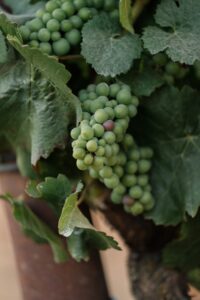
Dijon 777 clone, Starscape Vineyard, Russian River Valley
Dijon Clones
These are Pinot Noir clones that have been taken through the University of Dijon, identified, and cleaned of any viruses or diseases they may have. They are often earlier ripening clones that at harvest have slightly lower acid and often higher sugar levels than their California Heritage counterparts. In the final wines they display flavors of black cherry, bramble berries, sassafras, dark earth, and sometimes an herbal eucalyptus. They have a slight tanning, but are well known for their juicy, silky, elegant, and finessed mouthfeels. You’ll find these clones labeled numerically as 114,115, 667, 777, 828, and many more. Each of these numbers/clones are unique themselves.
California Heritage Clones
These types of clones have a bit more of a rebel side. Many of these clones are also called “suitcase clones” as they were smuggled back to California from Burgundy at some point in time. As we know, it is illegal to smuggle contraband agricultural products into other states let alone countries on the other side of the world… but hey, they make delicious wines! We often refer to these clones as having a more “rustic” flavor profile. You’ll find flavors and aromas such as burnt orange peel, tart cranberry, pomegranate, Rainier cherry, pumpkin seed, squash, fall leaves, and a slight leather or tobacco. These clones are later ripening

Swan clone, Bucher Vineyard, Russian River Valley
meaning they will be ready to pick later in the growing season while maintaining higher acidity, lower sugars while often being picked an entire month later than Dijon clones. You’ll find some of these clones named as such, Martini Clone, Mount Eden, Calera, Swan. If you’re a sharp tack and thought, “hmm… those are all names of California wineries,” well I encourage you to do some digging as to who brought these wonderful clones to California.
In our next article we’ll dive deep into each single vineyard Pinot noir Joseph Jewell makes and see why they taste the way they do based on what we’ve learned in this article.



